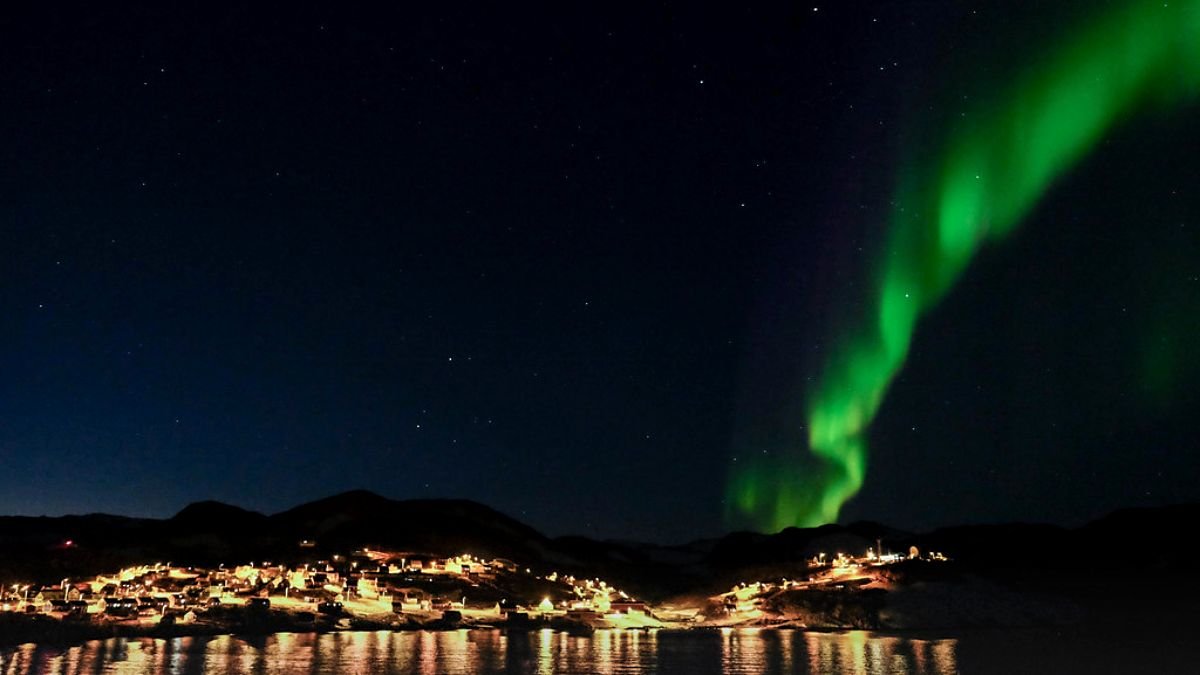Overview:
Greenland, the world’s largest island, is a captivating destination known for its stunning natural landscapes, unique Inuit culture, and diverse wildlife.
Although the island is predominantly covered in ice, it offers a spectacular array of tourist attractions ranging from mesmerizing fjords and vibrant coastal towns to dramatic icebergs and the enchanting Northern Lights.
Greenland’s rugged beauty and remote wilderness make it an ideal destination for adventure enthusiasts and nature lovers alike.
In this blog, we’ll explore the best 14 tourist attractions in Greenland, each with its own distinct charm and significance.
Table of Contents
1. Ilulissat Icefjord
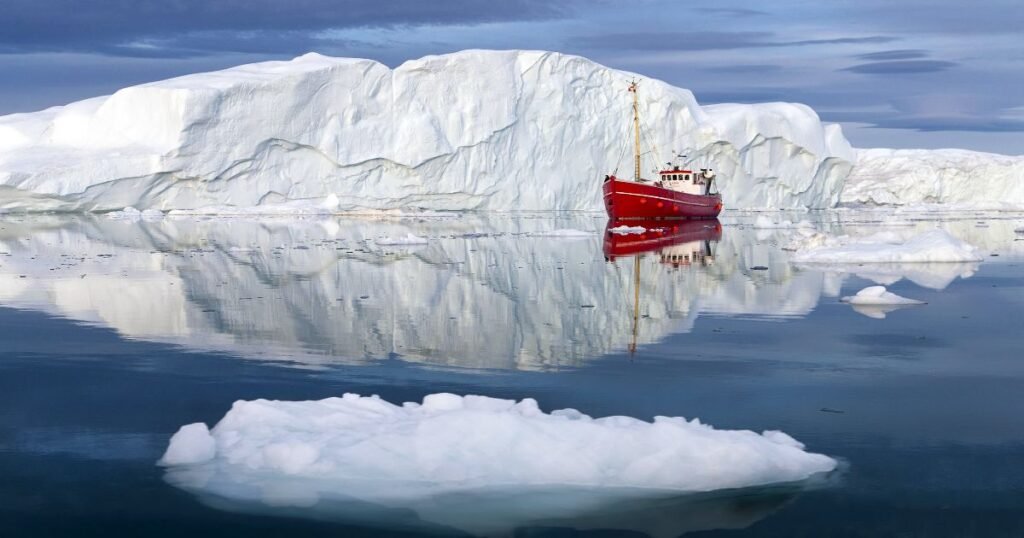
Ilulissat Icefjord, a UNESCO World Heritage Site, is one of Greenland’s most famous natural attractions. Located on the west coast, near the town of Ilulissat, this stunning ice fjord is home to massive icebergs that have calved off the Sermeq Kujalleq Glacier, one of the fastest-moving glaciers in the world.
Historical and Cultural Significance:
The Icefjord has been an important site for the Inuit people for centuries, who have used the area for fishing and hunting. It remains a significant symbol of Greenland’s cultural heritage and natural beauty.
Unique Features:
Take a boat tour or a helicopter ride to witness the awe-inspiring sight of giant icebergs floating in the deep-blue waters of the fjord. Hiking along the designated trails offers panoramic views of the glacier and surrounding landscapes.
Best Time to Visit:
The best time to visit Ilulissat Icefjord is between June and September, when the weather is milder, and the Midnight Sun illuminates the icebergs.
Travel Tips:
- Transportation: Ilulissat is accessible by air from Nuuk and Kangerlussuaq. Boat tours and guided hikes are available locally.
- Accommodation: Choose from hotels, guesthouses, or stay at an igloo lodge for a unique experience.
- Local Customs: Respect the pristine environment by staying on marked trails and not disturbing the icebergs.
2. Nuuk, the Capital City
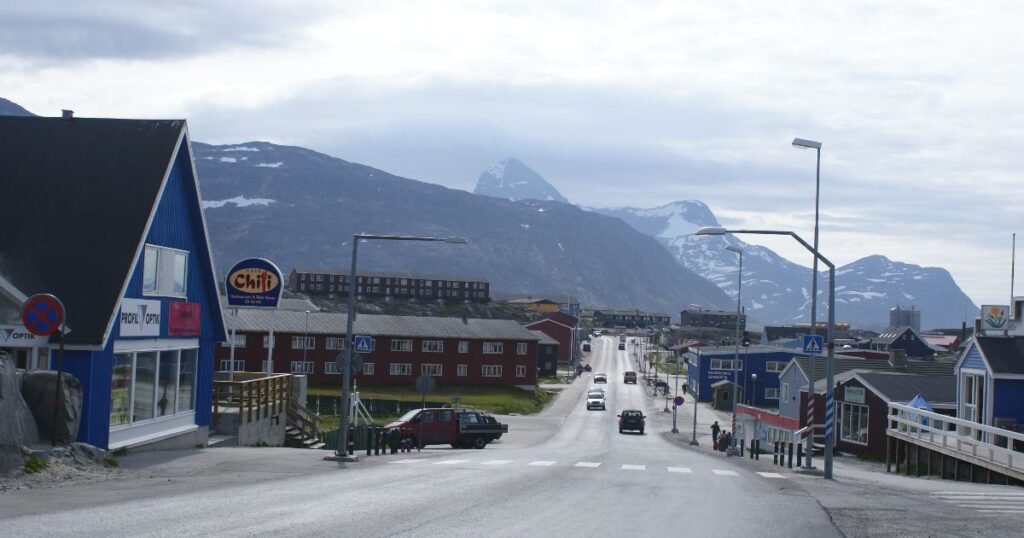
Nuuk, Greenland’s capital, is a charming city that seamlessly blends traditional Inuit culture with modern amenities. As the cultural and economic hub of the island, Nuuk offers a unique glimpse into Greenlandic life and traditions.
Historical and Cultural Significance:
Founded in 1728, Nuuk is one of the oldest settlements in Greenland. The city is home to the Greenland National Museum, which preserves artifacts and exhibits related to the island’s history and indigenous heritage.
Unique Features:
Visit the colorful houses lining the harbor, explore the Katuaq Cultural Centre, and stroll through the old colonial harbor to see historic buildings and traditional kayaks.
Best Time to Visit:
The best time to visit Nuuk is from May to August when the weather is pleasant for outdoor activities and cultural events.
Travel Tips:
- Transportation: Nuuk is well-connected by air, with flights from Iceland and other parts of Greenland. The city is compact and walkable.
- Accommodation: There are several hotels and guesthouses catering to various budgets.
- Local Customs: Be respectful of local traditions, and try to learn a few phrases in Greenlandic or Danish.
3. Tasiilaq and the Ammassalik Fjord
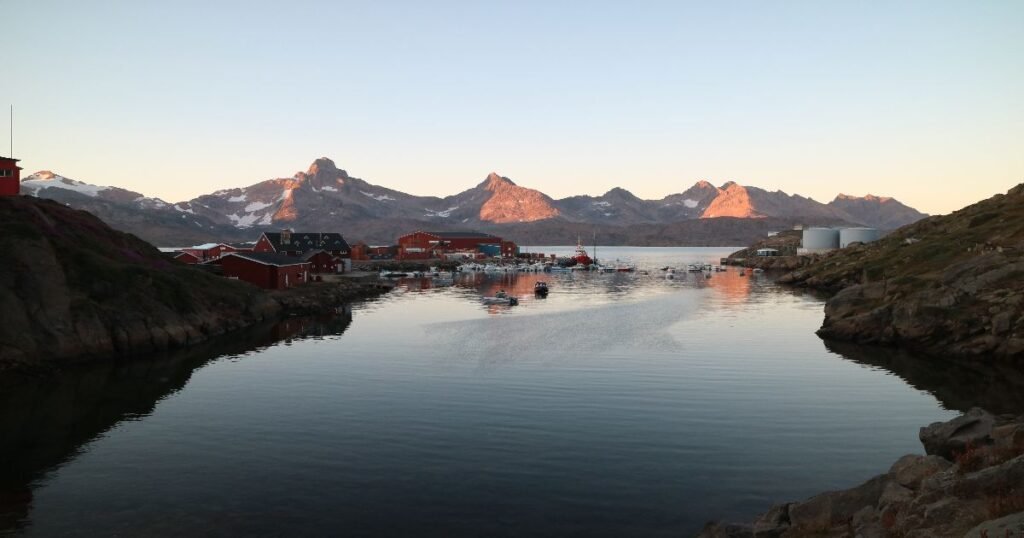
Tasiilaq, the largest town in East Greenland, is a picturesque settlement nestled along the Ammassalik Fjord. Surrounded by dramatic mountains and ice-filled waters, Tasiilaq is a paradise for outdoor enthusiasts seeking adventure in a serene setting.
Historical and Cultural Significance:
Tasiilaq is known for its vibrant Inuit community and traditional way of life. Visitors can learn about the local culture by visiting the town’s museum and interacting with local artisans.
Unique Features:
Explore the Ammassalik Fjord by boat, hike through the Flower Valley, or embark on a dog-sledding adventure in the winter.
Best Time to Visit:
Visit from June to September for hiking and boating, or between February and April for dog-sledding and Northern Lights viewing.
Travel Tips:
- Transportation: Tasiilaq is accessible by helicopter from Kulusuk Airport, which has flights from Nuuk and Reykjavik.
- Accommodation: Stay at local guesthouses or small hotels with stunning views of the fjord.
- Local Customs: Participate in community events and respect local customs when visiting Inuit settlements.
4. Kangerlussuaq and the Russell Glacier
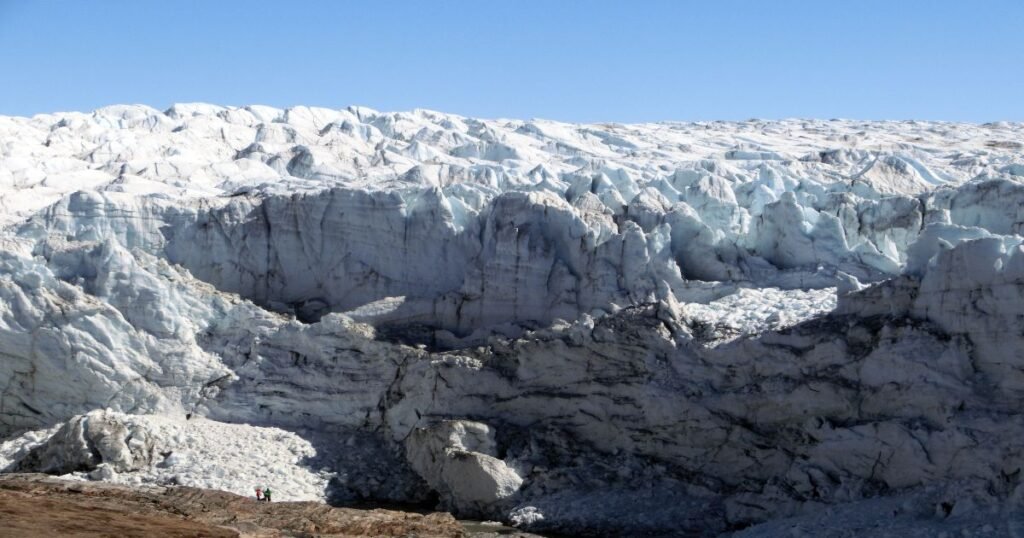
Kangerlussuaq is a gateway to the Greenland Ice Sheet and offers some of the best opportunities to explore the island’s icy wilderness. The nearby Russell Glacier is a magnificent sight with its towering ice cliffs and pristine blue ice.
Historical and Cultural Significance:
Kangerlussuaq was originally established as a U.S. Air Force base during World War II and has since evolved into a key entry point for tourists visiting Greenland.
Unique Features:
Take a guided tour to the Russell Glacier, go on a dog-sledding trip, or join a wildlife safari to spot reindeer, musk oxen, and Arctic foxes.
Best Time to Visit:
The best time to visit is between June and September for glacier tours or between December and March for winter activities.
Travel Tips:
- Transportation: Kangerlussuaq has the main international airport in Greenland. Guided tours and transport to the glacier are readily available.
- Accommodation: Stay at the Kangerlussuaq Hotel or local guesthouses near the airport.
- Local Customs: Dress in layers and be prepared for changing weather conditions. Respect local wildlife by maintaining a safe distance.
5. Qaqortoq and the Great Greenland Fur House
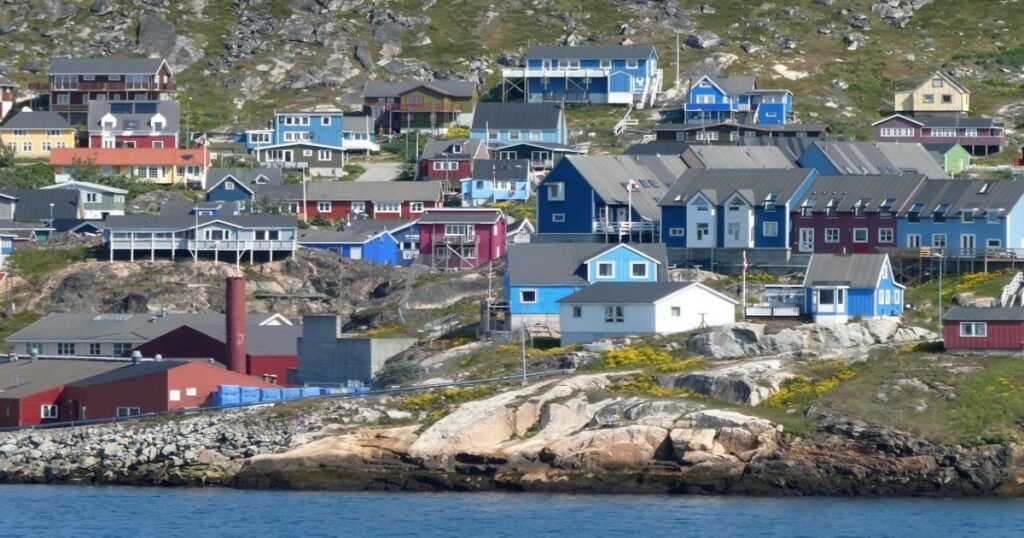
Qaqortoq is one of the most charming towns in South Greenland, known for its colorful houses, art scene, and historic sites. The town’s Great Greenland Fur House offers insight into Greenland’s fur trade and traditional craftsmanship.
Historical and Cultural Significance:
Founded in 1775, Qaqortoq is steeped in history and is home to many significant historical landmarks, including ancient Norse ruins and Inuit artifacts.
Unique Features:
Visit the Stone and Man art project, and the Qaqortoq Museum, and take a guided tour of the Great Greenland Fur House to learn about the island’s traditional industries.
Best Time to Visit:
The best time to visit Qaqortoq is from June to September when the weather is mild and suitable for outdoor exploration.
Travel Tips:
- Transportation: Qaqortoq is accessible by boat or helicopter from Narsarsuaq Airport.
- Accommodation: Stay at hotels or guesthouses in town, offering cozy rooms and friendly service.
- Local Customs: Support local artisans by purchasing handmade crafts and respecting the local way of life.
6. Disko Island and Qeqertarsuaq
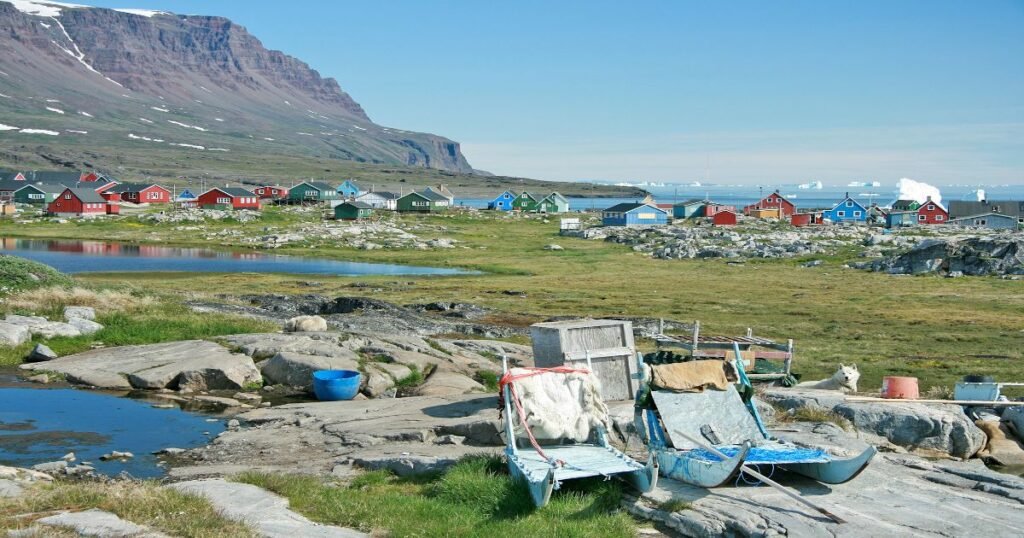
Disko Island, also known as Qeqertarsuaq, is the second-largest island in Greenland and is famous for its unique volcanic landscapes, towering basalt cliffs, and rich Arctic flora. The island’s dramatic terrain, which contrasts sharply with Greenland’s typically icy environment, offers exceptional hiking and adventure opportunities.
Historical and Cultural Significance:
Disko Island was originally inhabited by the Thule people, ancestors of modern Greenlandic Inuit. The island’s name, “Qeqertarsuaq,” means “The Big Island” in Greenlandic, highlighting its size and significance. Qeqertarsuaq town, the main settlement on the island, has a long history of whaling and is known for its traditional wooden houses and Arctic research station.
Unique Features:
Hiking enthusiasts can explore the Lyngmarks Glacier, which offers breathtaking views of Disko Bay and the surrounding mountains. In the summer, the island’s landscape comes alive with vibrant wildflowers, creating a striking contrast to the dark volcanic rock.
Best Time to Visit:
The best time to visit Disko Island is from June to September, when the weather is mild, and the trails are accessible for hiking and exploration.
Travel Tips:
- Transportation: Disko Island can be reached by boat or helicopter from Ilulissat and other towns in Disko Bay. Boat tours around the island are highly recommended.
- Accommodation: Stay in guesthouses or small hotels in Qeqertarsuaq town. Reservations should be made in advance, as accommodation options are limited.
- Local Customs: Be mindful of the delicate Arctic environment and avoid disturbing wildlife or plant life. Engage with the local community to learn about the island’s history and traditions.
7. Narsarsuaq and the Kujataa UNESCO World Heritage Site
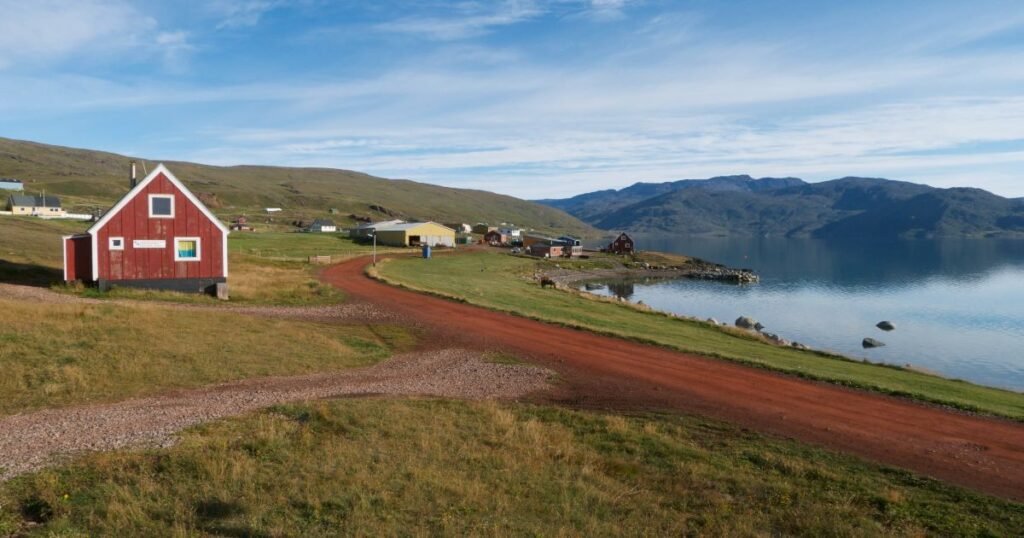
Narsarsuaq is a small settlement in South Greenland known for its proximity to the Kujataa UNESCO World Heritage Site, which encompasses a unique agricultural landscape created by the Norse settlers and later adapted by the Inuit people. This area is a testament to the island’s farming heritage and the coexistence of two distinct cultures.
Historical and Cultural Significance:
Kujataa’s significance lies in its blend of Norse and Inuit agricultural practices. The site includes ancient Norse ruins, Inuit hunting grounds, and traditional farmlands that have been cultivated for over a thousand years. It is one of the best places in Greenland to learn about the island’s early settlers and their way of life.
Unique Features:
Visit the ruins of Brattahlíð, the farmstead of Erik the Red, the Norse explorer who founded the first European settlement in Greenland. Explore the fields of Qassiarsuk, where modern farmers continue the age-old practice of sheep farming amidst spectacular landscapes.
Best Time to Visit:
The best time to visit Narsarsuaq and Kujataa is from June to September when the fields are lush and the weather is favorable for exploring the countryside.
Travel Tips:
- Transportation: Narsarsuaq is accessible by air from Nuuk, Kangerlussuaq, and Reykjavik. Guided tours to Kujataa are available locally.
- Accommodation: Stay at the Narsarsuaq Hotel or local guesthouses in Qassiarsuk.
- Local Customs: Respect the heritage sites by not climbing on ruins or disturbing the archaeological areas. Guided tours are recommended for a deeper understanding of the site’s history.
8. Uummannaq and the Heart-Shaped Mountain
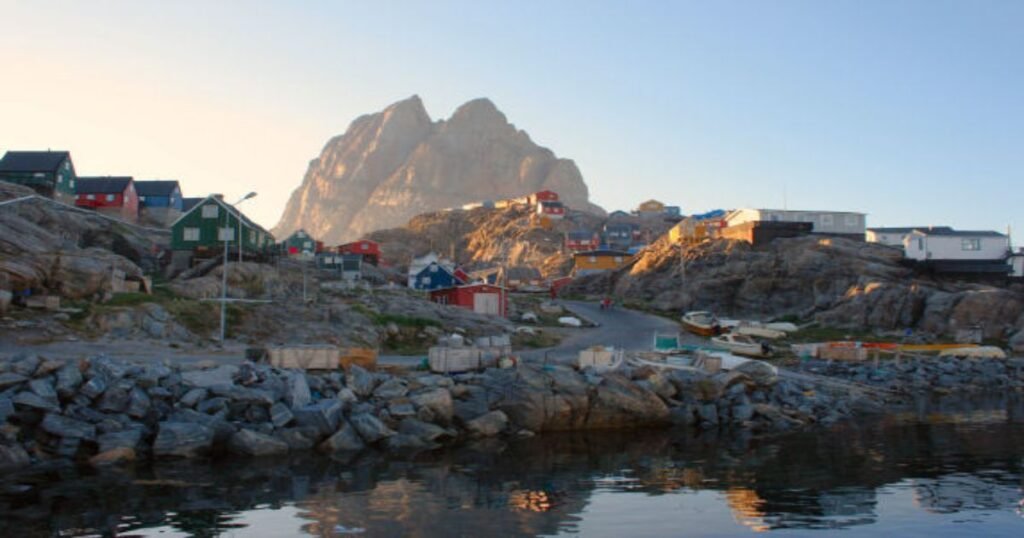
Uummannaq, a picturesque town in northwest Greenland, is renowned for its stunning location at the base of a heart-shaped mountain of the same name. The town’s dramatic scenery, colorful houses, and traditional lifestyle make it a must-visit destination.
Historical and Cultural Significance:
Founded in 1763, Uummannaq has a long history as a fishing and hunting community. The town’s museum offers fascinating exhibits on the region’s history, Inuit culture, and traditional tools used by hunters and fishermen.
Unique Features:
The town is overshadowed by the 1,170-meter-high Uummannaq Mountain, which is said to resemble a heart. Visitors can explore nearby icebergs, take boat trips around the fjord, and visit ancient Inuit settlements.
Best Time to Visit:
The best time to visit Uummannaq is between June and September, when the fjord is accessible by boat, and the weather is suitable for outdoor activities.
Travel Tips:
- Transportation: Uummannaq can be reached by helicopter or boat from Ilulissat and other nearby towns.
- Accommodation: Guesthouses and homestays are the primary accommodation options. Book in advance, as availability is limited.
- Local Customs: Engage with the local community and respect traditional fishing and hunting practices, which are vital to the town’s way of life.
9. Qaanaaq and the High Arctic
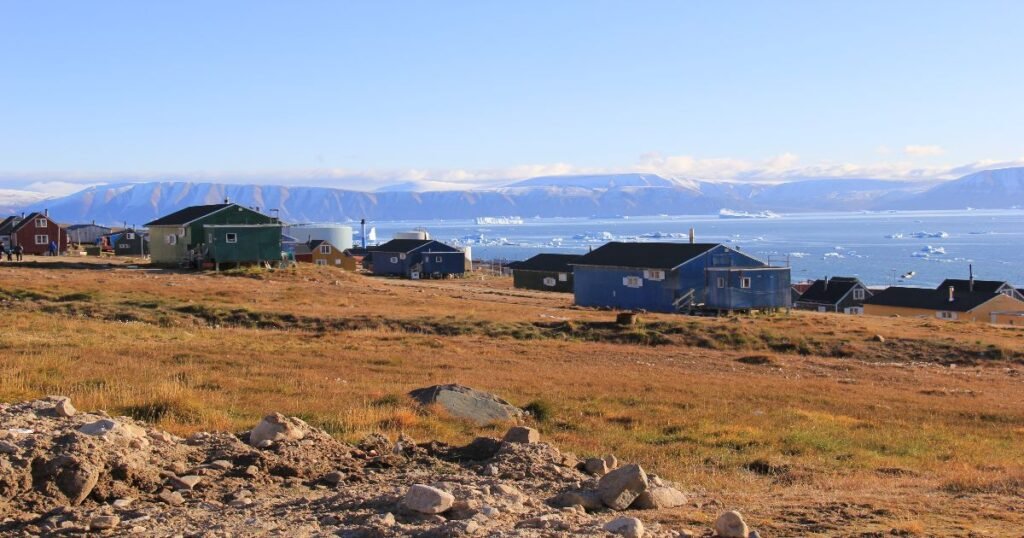
Qaanaaq, also known as Thule, is one of the northernmost towns in the world. This remote settlement offers a glimpse into life in the High Arctic, where the extreme environment has shaped a unique culture and way of living.
Historical and Cultural Significance:
Qaanaaq has been inhabited for thousands of years by the Thule people, ancestors of the Inuit. The town’s isolation has preserved its traditional culture, and visitors can learn about the Inuit way of life, including dog-sledding, ice fishing, and hunting.
Unique Features:
Experience the midnight sun in summer and the polar night in winter, take a dog-sledding trip with local hunters or explore the surrounding icebergs by kayak.
Best Time to Visit:
Visit Qaanaaq from June to August for the Midnight Sun and outdoor activities or from February to April for winter experiences and the Northern Lights.
Travel Tips:
- Transportation: Qaanaaq is accessible by small aircraft from Ilulissat and Upernavik. Transportation within the area is primarily by dog-sled or snowmobile.
- Accommodation: Stay at small guesthouses or arrange homestays with local families.
- Local Customs: Respect the harsh Arctic environment and adhere to local safety guidelines when venturing out into the wilderness.
10. South Greenland Fjords and the Blue Icebergs of Narsaq
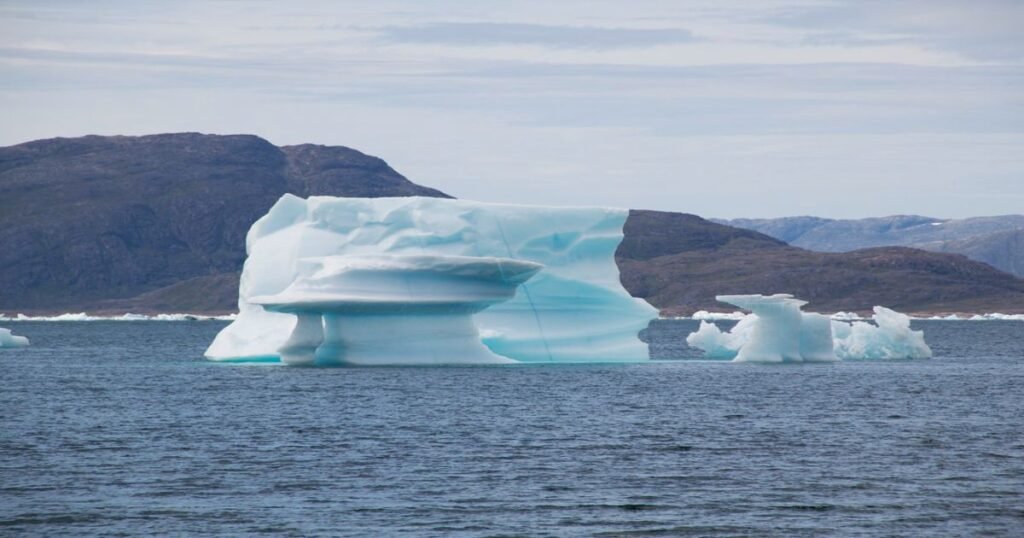
South Greenland boasts some of the island’s most stunning fjords, where vibrant green valleys meet icy blue waters dotted with massive icebergs. The town of Narsaq, nestled along the shores of Tunulliarfik Fjord, is a prime destination for exploring this scenic region, offering visitors an up-close view of some of the bluest icebergs in Greenland.
Historical and Cultural Significance:
The fjords of South Greenland have been used by the Inuit and Norse settlers for thousands of years for fishing, hunting, and farming. The town of Narsaq is rich in history and home to several archaeological sites, including ancient Norse ruins. It also serves as a hub for understanding Greenland’s agricultural heritage, which continues to thrive in this relatively mild region.
Unique Features:
Visitors can witness spectacular blue icebergs in the fjord, which take on an ethereal glow due to the compact nature of the ice. The area is also known for its fertile lands, making it one of the few places in Greenland where sheep farming is common. Hiking trails around Narsaq lead to panoramic viewpoints and scenic lakes.
Best Time to Visit:
The best time to visit South Greenland is from June to September when the weather is ideal for outdoor activities and the fjords are accessible by boat.
Travel Tips:
- Transportation: Narsaq can be reached by boat from Narsarsuaq or by helicopter. Boat tours to explore the fjords are available locally.
- Accommodation: Narsaq offers several small hotels and guesthouses. Advance booking is recommended, especially during peak season.
- Local Customs: Be respectful of local agriculture and avoid disturbing farmland. Engage with local farmers to learn about traditional Greenlandic farming practices.
11. East Greenland and Tasiilaq
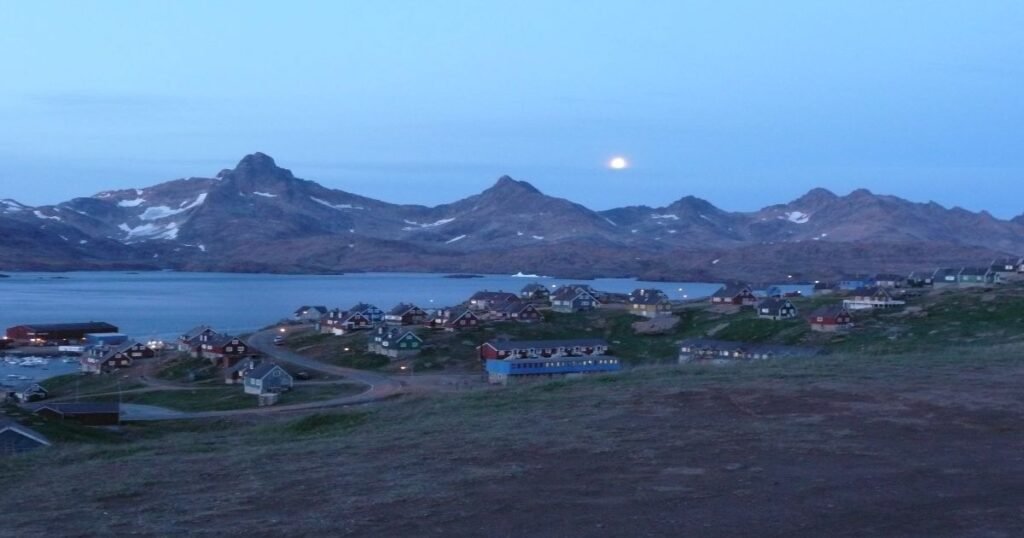
East Greenland, with its dramatic mountains, deep fjords, and remote settlements, offers a truly off-the-beaten-path experience. Tasiilaq, the largest town in East Greenland, is surrounded by rugged peaks and pristine wilderness, making it a prime destination for adventure enthusiasts.
Historical and Cultural Significance:
East Greenland was one of the last areas of Greenland to be settled by the Inuit, and it remains sparsely populated. The region’s isolation has helped preserve its unique culture and traditional way of life. Visitors can learn about the East Greenlandic dialect, which differs from the standard Greenlandic spoken in other parts of the country.
Unique Features:
East Greenland offers popular activities including hiking in the Flower Valley, kayaking among icebergs, and visiting remote settlements.
Best Time to Visit:
The best time to visit Tasiilaq is from June to September when the weather is mild, and the fjords are accessible. Winter visits are also possible for those seeking to experience dog-sledding and the Northern Lights.
Travel Tips:
- Transportation: Tasiilaq is accessible by helicopter from Kulusuk, which is connected to other towns by air. Boat tours and local flights are the best ways to explore the region.
- Accommodation: Stay at the Hotel Angmagssalik or one of the guesthouses in town. Book in advance, as accommodations are limited.
- Local Customs: Respect local traditions and avoid photographing people or private homes without permission. Learn a few basic phrases in the East Greenlandic dialect to show respect for the local culture.
12. Ittoqqortoormiit and the Northeast Greenland National Park
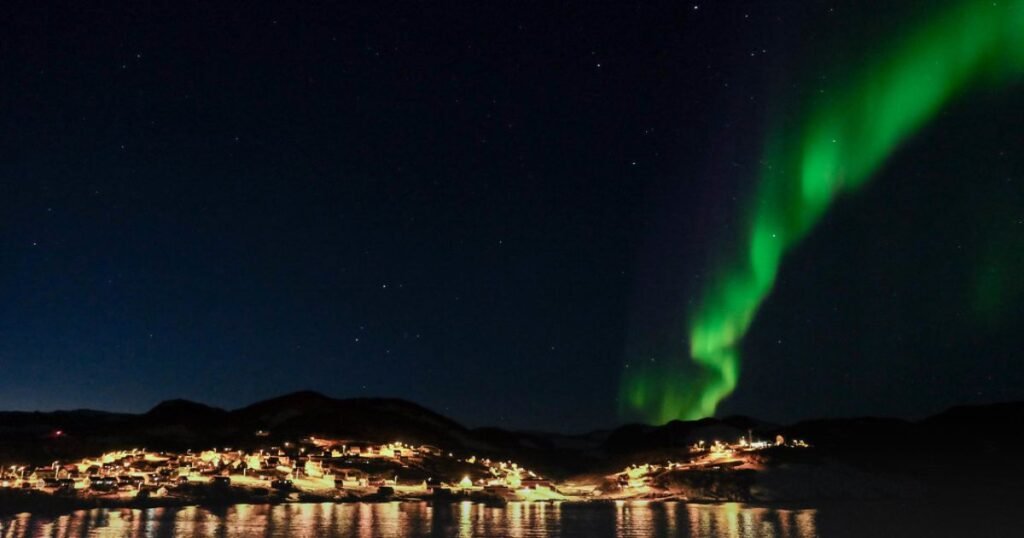
Ittoqqortoormiit is one of Greenland’s most remote settlements, located near the entrance of the world’s largest national park, the Northeast Greenland National Park. The town is known for its isolation, Arctic wildlife, and proximity to pristine fjords and glaciers.
Historical and Cultural Significance:
Ittoqqortoormiit was founded in 1925 by settlers from Tasiilaq and is one of the youngest settlements in Greenland. The town’s remote location has helped preserve its traditional Inuit culture and way of life, including dog-sledding, seal hunting, and fishing.
Unique Features:
The Northeast Greenland National Park is home to a diverse range of Arctic wildlife, including polar bears, musk oxen, and Arctic foxes. It is also known for its untouched landscapes, massive glaciers, and ice-capped mountains.
Best Time to Visit:
The best time to visit Ittoqqortoormiit is from June to September when the weather allows for boat and hiking trips. Winter visits are possible for those seeking a truly remote Arctic experience.
Travel Tips:
- Transportation: Ittoqqortoormiit can be reached by small aircraft from Reykjavik or by boat from other Greenlandic towns. Transportation within the region is limited, so plan accordingly.
- Accommodation: Stay in small guesthouses or homestays. Ittoqqortoormiit has limited facilities, so bring essential supplies.
- Local Customs: Respect the remote nature of the town and the traditional lifestyle of its inhabitants. Follow local guidelines when exploring the national park.
13. Eqi Glacier and Glacier Lodge Eqi
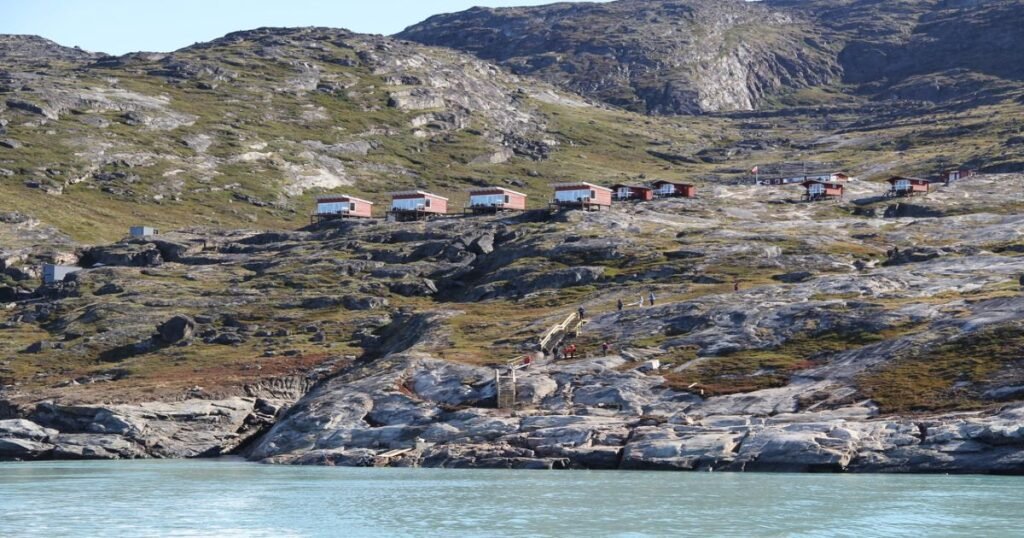
Eqi Glacier, located north of Ilulissat, is one of the most accessible and impressive glaciers in Greenland. Visitors can witness massive chunks of ice breaking off the glacier and crashing into the fjord below, creating a spectacular display known as calving.
Historical and Cultural Significance:
The Eqi Glacier area has long been used as a base for scientific research due to its dynamic nature and rapid ice movement. Today, it is a popular tourist destination, offering a unique opportunity to witness the power of glacial forces up close.
Unique Features:
The Glacier Lodge Eqi, located across the fjord from the glacier, provides comfortable cabins with panoramic views of the glacier. Guests can watch the glacier calving from the comfort of their rooms or hike in the surrounding tundra.
Best Time to Visit:
The best time to visit Eqi Glacier is from June to September when boat tours are available, and the weather is suitable for hiking and exploration.
Travel Tips:
- Transportation: Eqi Glacier can be reached by boat from Ilulissat. Guided tours and day trips are available.
- Accommodation: Stay at Glacier Lodge Eqi for an immersive experience. Book early, as space is limited.
- Local Customs: Follow safety guidelines when observing the glacier. Avoid getting too close to the calving ice for safety reasons.
14. Northeast Greenland National Park
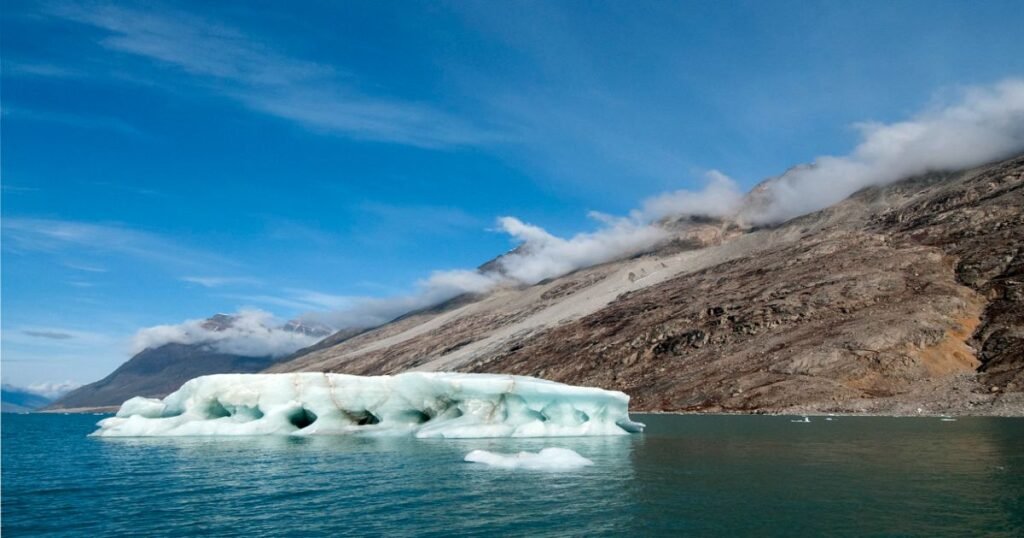
Northeast Greenland National Park is the largest national park in the world, covering an area larger than most countries. This remote and pristine wilderness area is home to a diverse range of Arctic wildlife and some of the most spectacular landscapes in Greenland.
Historical and Cultural Significance:
The national park was established in 1974 to protect the region’s unique ecosystem and wildlife. It is home to historical hunting grounds and ancient Inuit archaeological sites that offer insights into the early inhabitants of Greenland.
Unique Features:
The park’s landscapes are incredibly varied, ranging from towering mountains and deep fjords to vast ice sheets and polar deserts. Wildlife enthusiasts can spot polar bears, Arctic foxes, and various bird species
Best Time to Visit:
Visit during the summer months (June to August) when the weather is relatively mild, and wildlife is more active.
Travel Tips:
- Transportation: Access to the park is extremely limited. Most visitors arrive via specialized expedition cruises or guided tours.
- Accommodation: There are no permanent accommodations within the park. Visitors must camp or stay on expedition ships.
- Local Customs: Preserve the untouched environment by following strict guidelines on waste disposal and respecting wildlife.
Also Read: Best 14 Tourist Attractions in Germany
Conclusion
Greenland is a land of unparalleled beauty and adventure. Its remote wilderness, dramatic ice formations, and rich cultural heritage make it a destination unlike any other.
From the majestic Ilulissat Icefjord to the vibrant capital of Nuuk, each of Greenland’s attractions offers a unique experience that leaves a lasting impression on all who visit.
Whether you seek thrilling outdoor adventures, quiet contemplation amidst stunning landscapes, or a glimpse into the traditions of the Inuit people, Greenland has something extraordinary to offer.
FAQs
1. What is the best time of year to visit Greenland?
The best time to visit Greenland is between June and September for mild weather and long daylight hours or between December and March for winter activities and the Northern Lights.
2. Do I need a visa to visit Greenland?
Greenland is a part of the Kingdom of Denmark, so visa requirements are similar to those for Denmark. Check with the Danish embassy for the latest requirements based on your nationality.
3. How can I get around in Greenland?
Travel within Greenland is mainly by air, boat, or helicopter due to the lack of road connections between towns. Guided tours and chartered flights are popular options for exploring remote areas.
4. What should I pack for a trip to Greenland?
Pack warm clothing, including thermal layers, waterproof jackets, and sturdy footwear. Binoculars, sunglasses, and a camera with a good zoom lens are also recommended.
5. Is it safe to travel to Greenland?
Greenland is generally a safe destination, but visitors should be prepared for harsh weather conditions and limited medical facilities in remote areas. Always travel with a guide and inform someone of your travel plans when exploring the wilderness.
Let me know if you would like to add more details or include additional attractions for Greenland!

